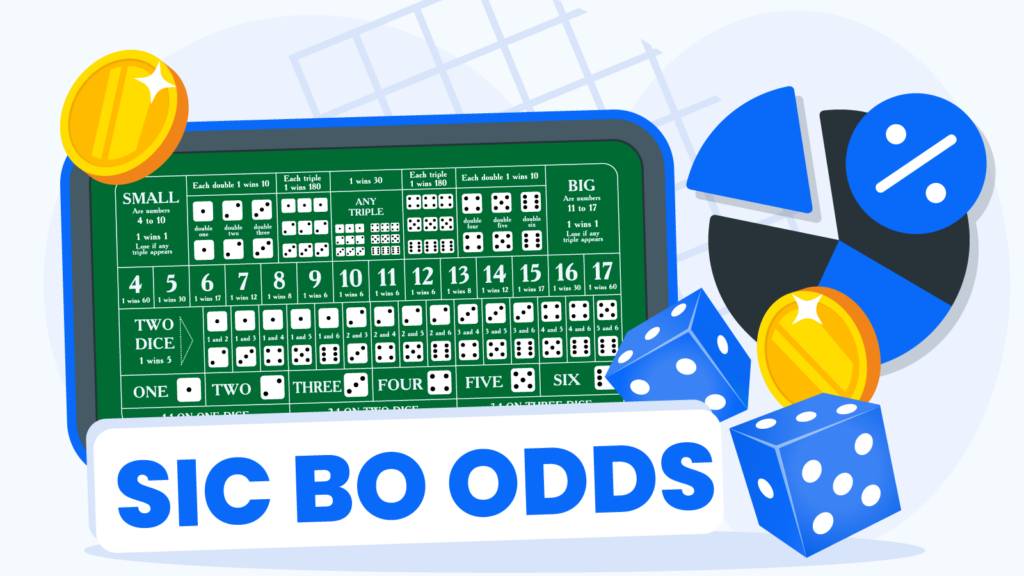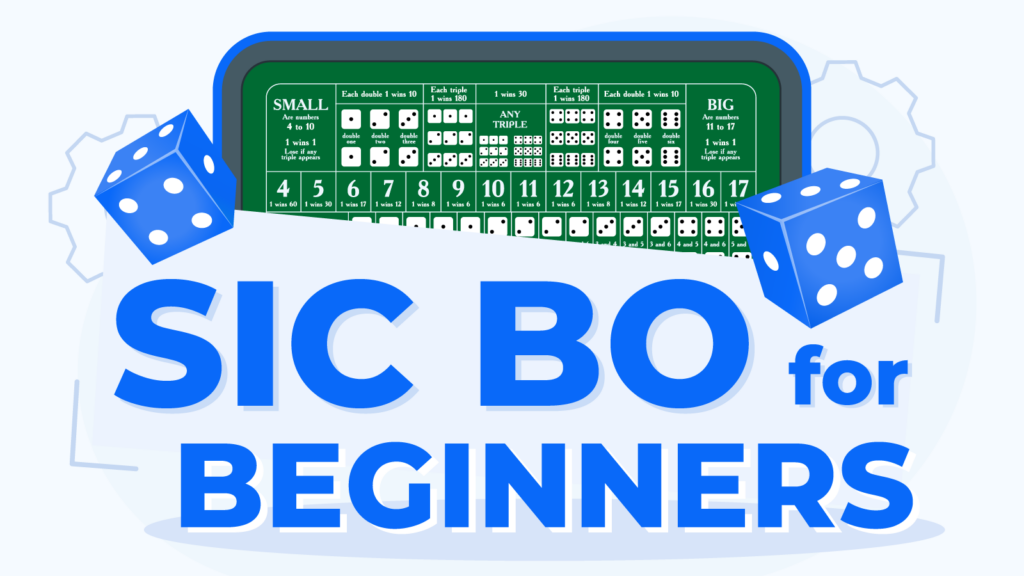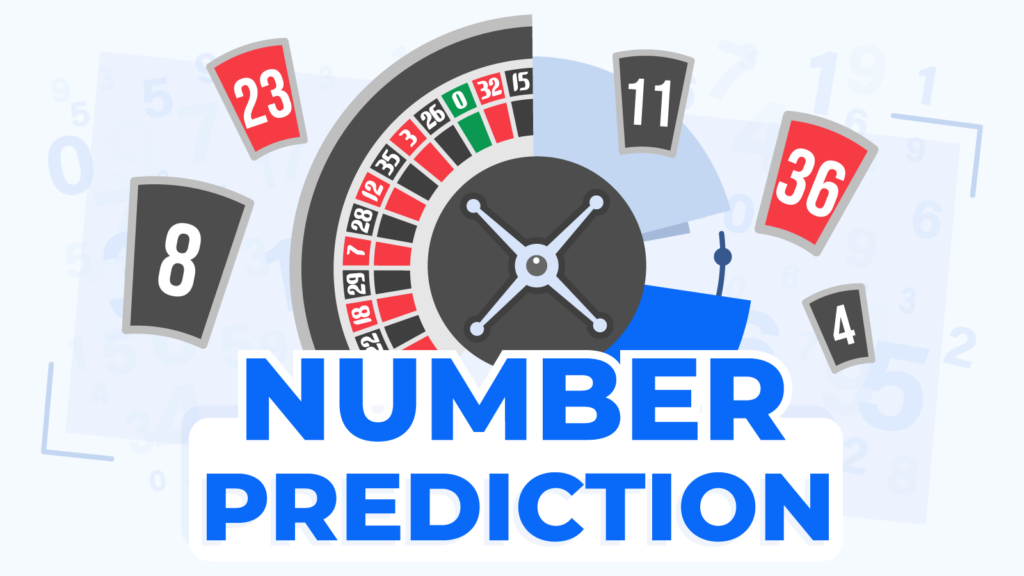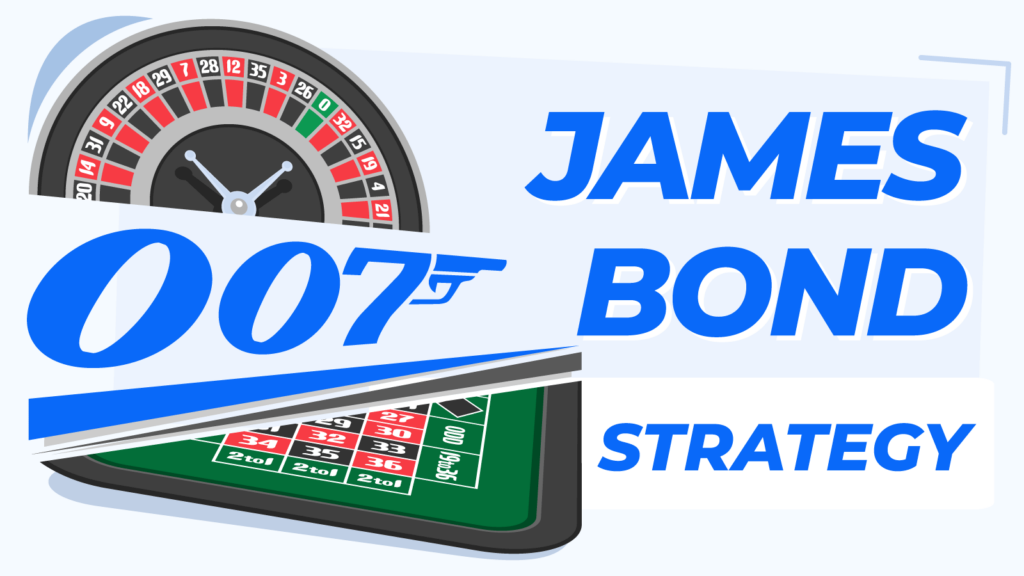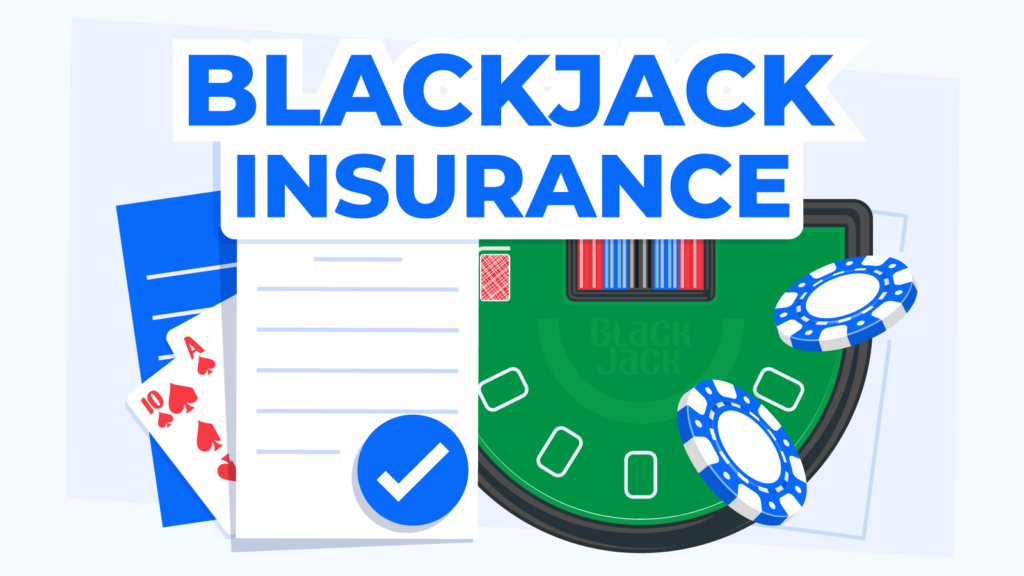
Is Blackjack Insurance Worth It? Learn From Experts
All the information in this page was checked by:
All the information we present is verified by our team of casino reviewers using multiple sources. We commit to a high level of accuracy and reliability.
We have paid partnerships with the online casino operators featured on our site. We also earn commissions when you, the user, click on certain casino links. These financial partnerships do not affect our reviews, recommendations, or analysis. We remain committed to delivering unbiased gambling reviews. For more details, visit our Advertiser Disclosure page.
Think buying insurance in Blackjack keeps you safe? Think again. This side bet pays 2:1 if the dealer has blackjack, but the odds are stacked against you. CasinoAlpha’s analysts tracked 1,000 hands—players lost 7% more often when taking insurance. Learn why pros call it a “sucker bet” and when to walk away. Spoiler: Basic strategy beats guesswork every time.
- What Is a Blackjack Insurance Bet?
- How to Place and Utilize an Insurance Bet
- Reasons Players Opt for Insurance Bets
- Understanding the Hi-Lo Card Counting System
- The Mathematical Debate Behind Insurance Bets
- Alternatives to Taking Blackjack Insurance
- Back to Basics: Understanding the Deck in Blackjack
- Key Insights on Blackjack Insurance
What Is a Blackjack Insurance Bet?
The insurance bet is a wager on the dealer having a blackjack. It is a side bet offered only when the dealer’s up-fronting card is an Ace. You must stake half of your initial bet, and if the dealer indeed has blackjack, your wager wins at 2:1 odds.
Warning: Beware of Deceptive Terminology
The word “insurance” means protection, but its use here has nothing to do with safeguarding an original bet. Blackjack insurance is an entirely separate side bet that the dealer holds a natural 21. Unlike blackjack surrender, which allows you to fold weak hands and recover half your stake much like its name suggests, insurance doesn’t protect your hand at all. It’s purely a gamble on the dealer’s hidden card.
How to Place and Utilize an Insurance Bet
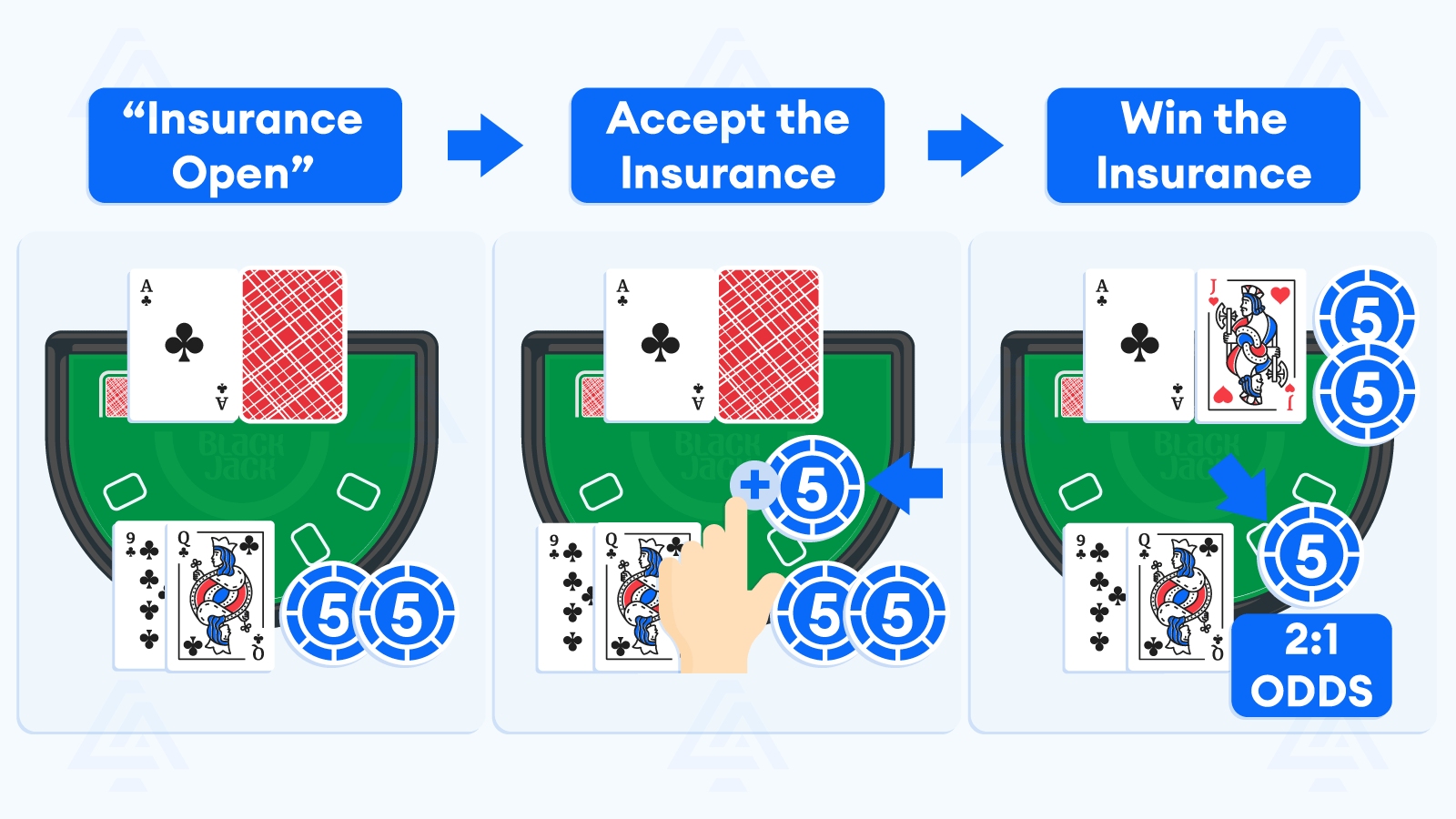
- The dealer shows an Ace. Usually, shortly after, they say “Insurance open”.
- In live dealer casinos, you see a pop-up or a notification prompting you to take the insurance.
- You must accept the insurance side bet before the dealer gets to peek at his hole card.
- Once the dealer has seen his hidden card, the offer expires.
- You assume it indeed may be a 10 valued card and take the bet.
- It turns out your hunch was correct.
- The dealer has blackjack, and you win the insurance at 2:1 odds.
- However, the initial wager is lost.
Example Let’s say you insure a £10 bet. This means you place an additional £5 bet on the dealer’s hand. Therefore, one or both wagers may be lost. There are 3 scenarios:
- The dealer’s hole card is worth 10 points, and you break even with the insurance.
- They don’t have blackjack, and you win your initial bet, scoring a £5 profit.
- They don’t have blackjack, but your cards are worthless, meaning you lose £15 on that round.
Timing Matters!
With 3 to 2 blackjack payouts, you’re simply waiting to see if your natural 21 wins. Insurance is different in that requires an instant decision. You have mere seconds to make your decision before the dealer checks their hole card. This pressure often leads players to abandon logic and make emotional decisions.
Common Insurance Myths Debunked
Myth 1: Insurance protects my strong hand
Many players believe that if they have 20, taking insurance locks in a profit. Well, that’s not what happens. Your hand’s strength does not matter in the insurance bet. In fact, when you have two 10-value cards in your hand, the blackjack insurance is even worse mathematically.
Myth 2: The dealer has been hot, so they probably have blackjack
Hot and cold streaks sure do exist in blackjack, but they do not affect future outcomes. Each shuffle resets the probabilities, unless, of course, you’re card counting. The dealer’s recent results cannot help you determine whether their current hole card is a 10.
Myth 3: It’s only half my bet, so it’s not a big risk
While the insurance wager is smaller than your original bet, its house edge is usually between 6% and 7% in standard games, which is far higher than the 0.5% you get when using basic strategy. It’s a small bet, but statistics will show you it drains your bankroll much faster than optimal play.
Myth 4: Insurance is worth it at full tables
Just because more cards are visible at a full table doesn’t make insurance profitable. Unless you’re actively counting cards and the true count exceeds +3, insurance remains a negative expectation bet regardless of how many players are seated.
The takeaway here is that when you play blackjack at UK casinos, it doesn’t help trying to protect your hand through insurance because, despite the name, that is not what the bet does. It only works if you’ve mastered advantage play techniques.
Reasons Players Opt for Insurance Bets
The main aim of blackjack insurance is to break even. However, most players take this bet for one of these two reasons: 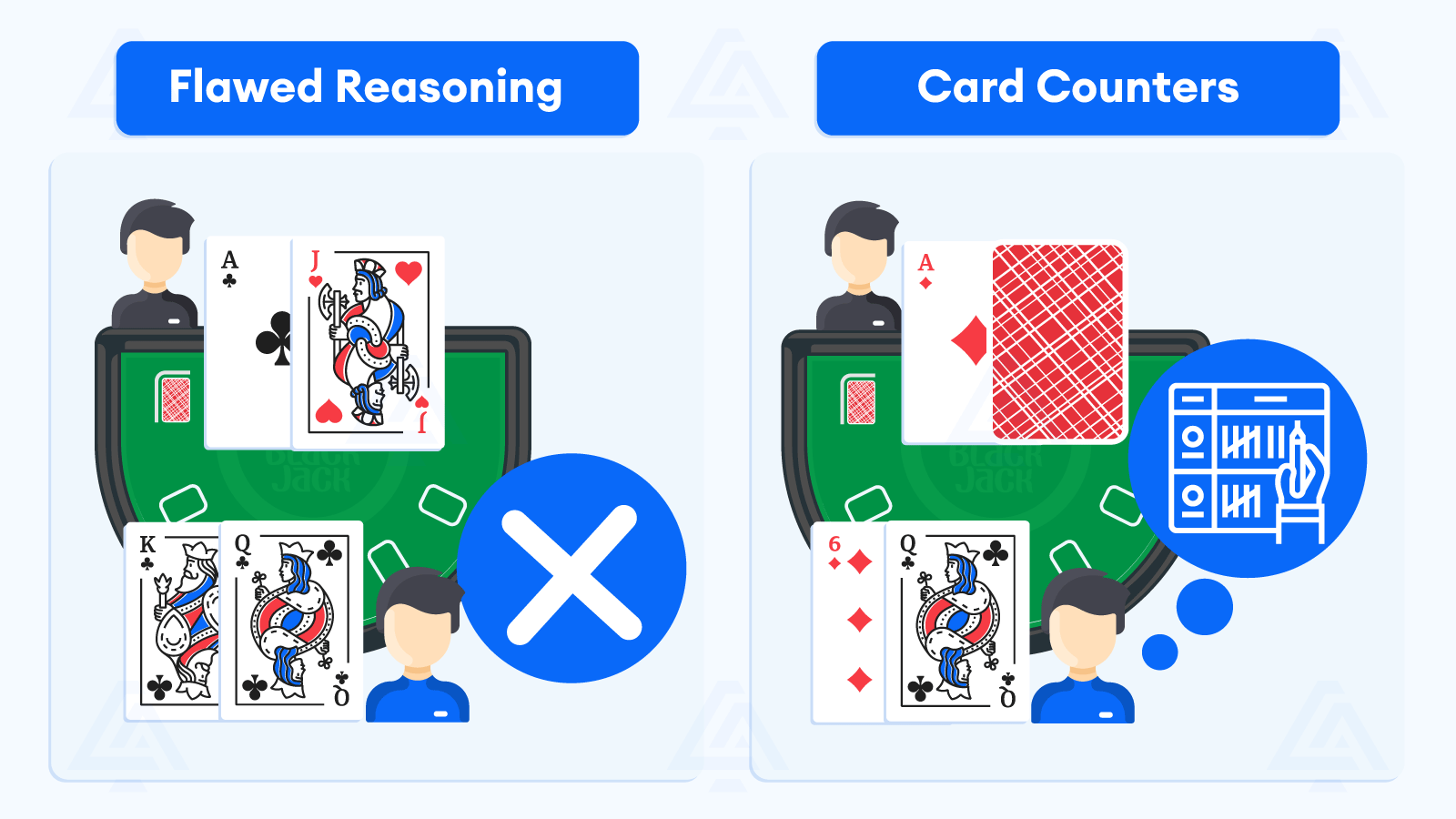
- Flawed reasoning
- They are expert card counters
Flawed reasoning
Players sometimes take insurance due to confusion, flawed reasoning, or a complete lack of statistical training. You cannot do without a good understanding of the game if you want to have a chance to succeed when you play on blackjack casino sites.
For example, it’s expected that players are misled by the wager’s name, not grasping the basic Blackjack rules and meaning of blackjack insurance. Conceptual confusion can make way to some silly mistakes, and using insurance as a betting strategy in itself is potentially bankroll-draining. You can use various Blackjack Strategy apps to help you decide which one matches your situation.
The most common error
Novices would insure a 20 point-valued pair rather than a soft 7. They may believe a hand like that gives them a strong position. So, they take insurance. It is indeed strong because it’s close to 21, but it’s not one to insure. Remember, you don’t insure anything. You bet on the dealer’s hole card being a 10 valued card.
When you have two 10-point cards, the last thing you want to do is bet that the dealer has another. Even more so when you think the house edge for this bet is close to a whopping 6%. The fact that you have 2 of them significantly reduces the probability that the dealer may have a 10-valued hole card.
Generally, the dealer has a chance of 33% to hit blackjack. With each 10 that’s been dealt into play, their opportunities for blackjack drop, and your chances to win the insurance drop as well. Therefore, this betting pattern is not one to follow.
They are expert card counters
Card counters may tweak this side bet to their advantage. They may profit from it by applying various strategies to discern when a 10 or face card is imminent. If you do some research on the subject, you’ll see that many use the Hi-Lo system.
Understanding the Hi-Lo Card Counting System
The Hi-Lo system assigns a value to each card to make card counting easier. Cards 2 to 6 are given a +1 value. 7,8, and 9 are valued 0. Cards from 10 to the King have attributed a -1 value.
You need to focus on the table and add or subtract the corresponding number. Depending on the current count sum, players take different routes of action in the game, for example, buy blackjack insurance, hit or stand. We won’t dive into the details of card counting. Advanced blackjack strategies cannot be summed up in a few words.
Still, these systems essentially count the 10-valued cards on the table and estimate the remaining ones in the deck. Insurance becomes a good bet when more than 50% of the remaining cards are likely to be worth 10 points. However, this technique becomes increasingly tricky when more than two Blackjack decks are used. Successful card counting may get you banned, as you would pose a risk to the house. This rule applies in live online blackjack casinos as well. Thus, if you’re to use this technique, handle it with care.
The Mathematical Debate Behind Insurance Bets
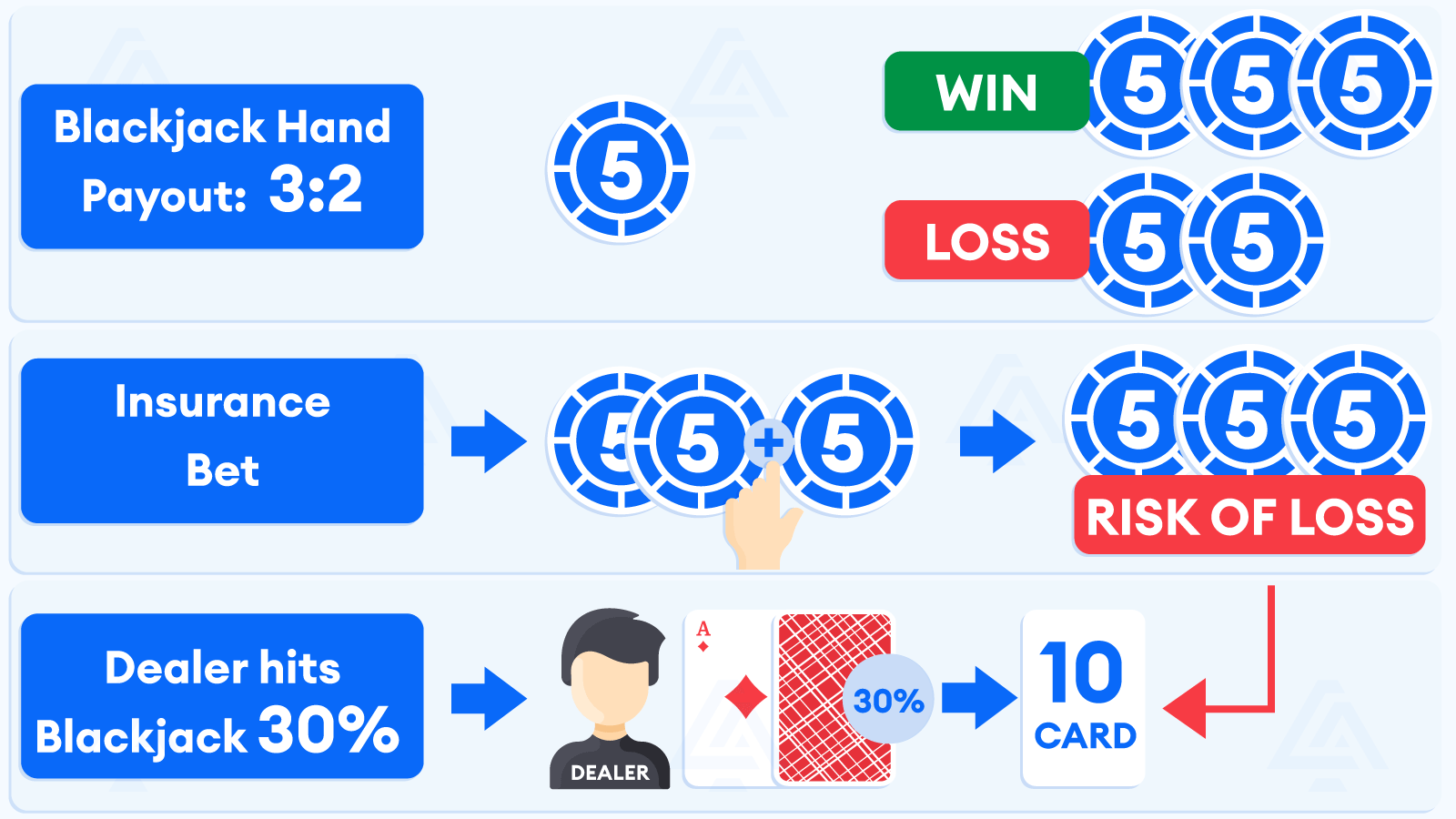
This translates with you loosing more than 50% of your insurance wagers. You may lose both your initial stake and the insurance bet. That’s why placing too many insurance bets will lose you money in the long run.
The only chance to get both the initial and insurance bet is to play a variation in which players win blackjack ties. An example would be Super Fun 21. In this variant, a player’s blackjack always beats the dealer’s.
The expected value for various types of bets
| Bet | Expected Value |
|---|---|
| Individual numbers | ↘ |
| Insurance bet | ↘↘ |
| Even money bet | 0 (no value) |
| Not taking even money | ↗ |
While betting on individual Roulette wheel numbers yields a negative expected value, statistically, it is a better bet than taking the insurance in blackjack.
Insurance vs Even Money: Understanding the Real Difference
Alternatives to Taking Blackjack Insurance
Other bets share similarities with insurance, but a blackjack expert knows the differences. Discover how these side bets work and never fall in the casinos’ traps again. It’s a known fact that the house edge in blackjack starts at 0.5%, being one of the lowest house edges in this domain. This is an ideal level, and not many reach it. Still, you should at least try to apply a basic strategy – derived from math – to increase your odds of being successful in Blackjack. 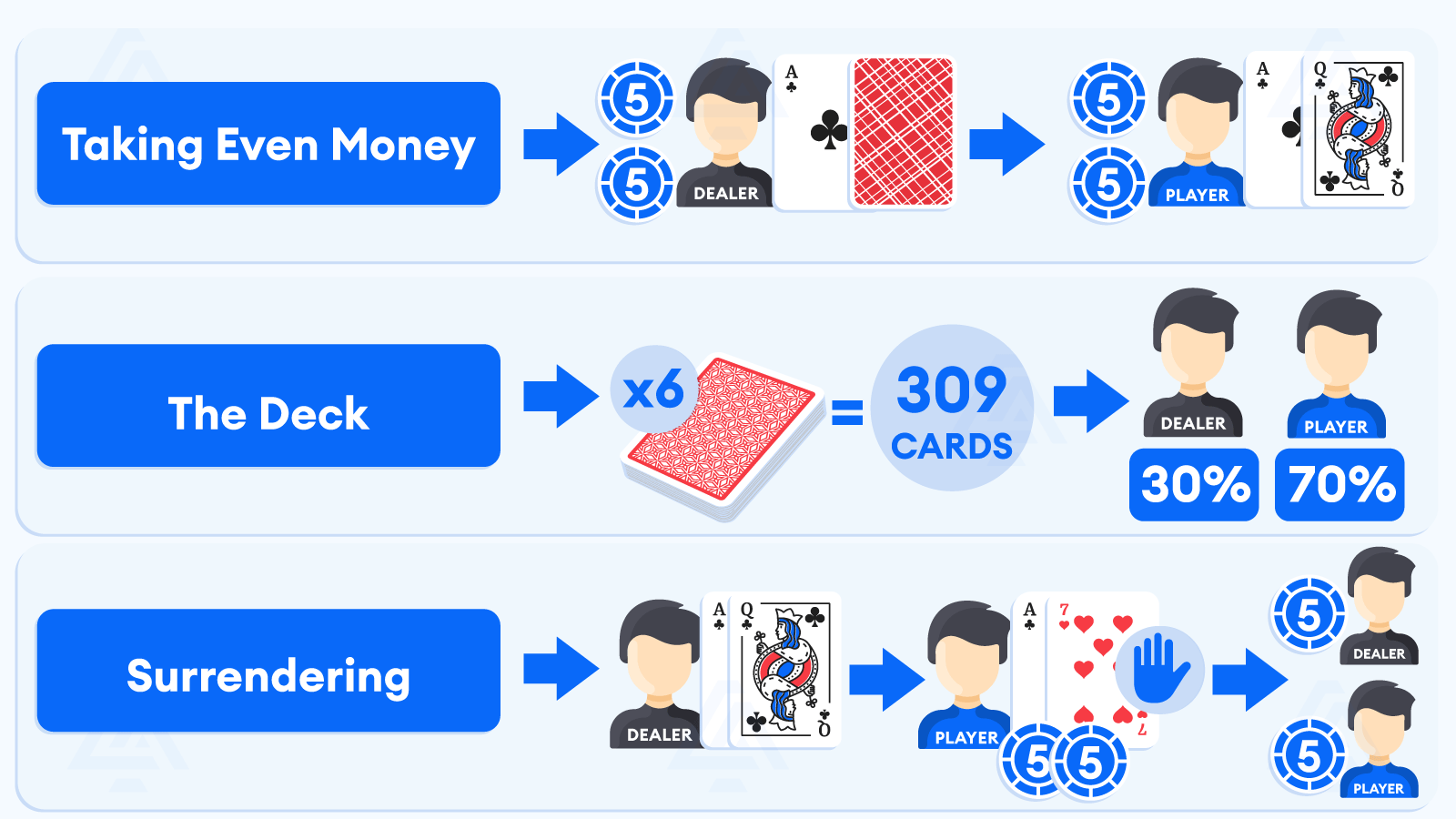
Taking even money
Even money is a type of side bet that’s sometimes mistaken for blackjack insurance. Remember there were 3 scenarios for insurance, and only one of them was profitable? There’s another possibility. Let’s call it the fourth scenario, where you are dealt a blackjack hand straight from the beginning while the dealer has an Ace. In this case, most will tell you to take even money because it’s a sure win.
Your options
The dealer will offer you even money before peeking at their hole card in situations like this. You have a choice:
- Take even money and secure a 1:1 payout
- Not take even money and have your stake returned if the dealer has blackjack
But the dealers are counting on your mathematical naivety.
Going in-depth
Remember, blackjack pays 3 to 2. That means, for a £20 winning wager, you would get paid £30. Even money bets pay 1:1, so you would win £20. Most players believe even money – and insurance bets for that matter – yield them secure profits. But that’s not the case exactly. Why would a casino pay you to double your stake when the dealer may have a blackjack himself hidden beneath the hole card? This situation would be a ‘push’, and you’d have your stake returned, so they wouldn’t need to pay you anything. Casinos do it because it is more likely that the dealer’s hole card is not 10-valued. Thus, your blackjack hand is worth more than what you’ve initially wagered. You can also try the 6 to 5 Blackjack strategy if you want a different option. In case you aren’t sure which one to choose, we have an in-depth explanation of the differences between 3 to 2 and 6 to 5 Blackjack betting.
Back to Basics: Understanding the Deck in Blackjack
Most casinos will use 6 decks. That’s 312 cards. Of these, 96 are worth 10 points. Suppose you have a blackjack, and the dealer has an Ace. That leaves 309 cards in the deck, out of which 95 are 10-valued. This brings us to the same percentage as before. 95 out of 309 means approximately 30%. The dealer’s chance to hit blackjack is 30%. That means in 70% of situations, your blackjack hand is a winner, and you get to leave with the full payout of £30. Even if there’s a 30% chance, you will push and have your stake returned in the other 70% of situations you win. That means, in the long run, not taking even money is more profitable. Online Casinos offer you the chance to practice your blackjack skills by playing with a welcome bonus. However, be aware that some do not allow you to wager your bonuses in Live Casino. Alternatively, you may invite a few friends over and emulate the casino experience right in your home! Now you see why dealers offer you even money? It’s not at all like they’re being generous.
Surrendering
Another side bet similar to blackjack insurance, but which may prove helpful if you apply basic strategy, is called ‘surrender. Compared to the other two, this one can get you out of tight situations. The Blackjack surrender rule is not the most popular in land-based casinos. However, you’ll find masses of live dealer rooms and other table games that accept it in the best online casinos. Just type in ‘Blackjack Surrender’ in the search bar.
How is it useful?
In essence, blackjack surrender allows you to give up your cards and half of your initial stake when the dealer has an Ace and is about to check his other card for blackjack. The dealer usually has a 30% chance of hitting a blackjack. But what if you have one of those hands in which any way seems the wrong way? For example, a 16. Having 16 points versus the dealer’s Ace is one of the worst situations to be in because:
- If you stand, the hole card can be anywhere between 6-10, and you lose
- If you hit and get any card between 6-10, you also lose
Both cases imply a high probability that you lose. That’s why the surrender side bet can be a wise move, where the situation requires it.
Real-World Insurance Scenarios: What Would You Do?
Scenario 1: You’re dealt 20 (K♠ Q♥), dealer shows Ace
You will probably be thinking you have a strong hand and that insurance will guarantee you break even if the dealer has blackjack. But the reality is your two ten-value cards reduce the dealer’s blackjack probability to roughly 28% (94 tens remaining from 309 cards), yielding an expected loss of approximately 7.4% of your bet.
Our advice? Don’t go the insurance way! Your 20 is strong against dealer hands that aren’t blackjack. When applying Martingale strategy or any progressive betting system, you preserve your bankroll for actual +EV situations by declining.
Scenario 2: You’re dealt blackjack (A♣ J♦), dealer shows Ace
Here, you may cave to the urge to go for the win, because, well, taking even money is a guaranteed win. But then your jack reduces tens to 95 remaining from 309 cards (30.7% dealer blackjack chance).
What should you do? Simple! Decline even money. Over 100 similar situations, refusing even money earns you approximately £60 more than accepting it. This is one of the few spots where blackjack basic strategy clearly favours variance over certainty.
Scenario 3: You’re dealt 12 (7♦ 5♠), dealer shows Ace at a £100 table
Your thinking: “My hand is weak. Maybe insurance will soften the blow if the dealer has blackjack?”
The reality: Insurance never protects your hand. It’s a separate bet on the dealer’s hole card. Your weak 12 actually makes insurance slightly less bad (no tens removed), but it’s still a negative expectation wager with roughly a 5.5% house edge.
Again, decline insurance. Play your 12 correctly (typically hitting against dealer Ace), instead. The house edge goes down to around 0.5% with proper basic, while insurance carries a 5-7% house edge.
Scenario 4: You’re card counting, true count is +5, dealer shows Ace
Your thinking: “The deck is rich in tens. This is finally when insurance makes sense.”
The reality: At true count +5 in Hi-Lo, approximately 35-36% of remaining cards are tens—above the 33% breakeven threshold. Insurance becomes a +EV bet.
For this, take insurance. At this count, you have roughly a 4-5% edge on the insurance bet. This is one of the few scenarios where insurance shifts from a casino advantage to a player advantage. Don’t forget, though, that this only applies if you counting is accurate, and this is something you only achieve with experience
Scenario 5: Playing in a tournament, you need any win to advance
Your thinking: “I have blackjack, dealer shows Ace. If I take even money, I guarantee advancement.”
The reality: Tournament strategy differs from cash game strategy. Locking in a guaranteed win might be correct if it ensures you advance to the next round where prizes increase dramatically.
Correct play: Consider taking even money. In tournament contexts, position and certainty sometimes override pure EV calculations. However, in cash games at UK blackjack sites, always refuse even money.
The Pattern You Should Notice:
In every cash game scenario except advantage play (counting), declining insurance is correct. The situations where insurance “feels right”—strong hands, dealer Aces, previous losses—are precisely when your emotions override mathematics. This is why understanding blackjack odds proves more valuable than any “feeling” about the game.
Key Insights on Blackjack Insurance
- Live casino sites allow blackjack insurance bets and accommodate all game variants.
- If you know how to count cards, you may see when the right moment is to use insurance.
- Most players believe they ‘insure’ their hand, but insurance is a wager on the dealer’s hand.
- Blackjack insurance pays 2:1, but you must stake half of your original bet
- It is helpful in 4 out of 9 cases (30%)
- Blackjack insurance is a wrong choice in the long run because the expected value is negative.
- There are minor differences between insurance and even-money
- However, an even-money proposition should be avoided at all costs
- You reduce the house advantage by not taking even money
- Conversely, even money bets and blackjack insurance wagers increase the house edge
- Surrendering may be helpful with certain hands, usually up to 16
F.A.Q.
What is blackjack insurance?
Blackjack insurance is a side bet offered when the dealer shows an Ace. You wager half your main bet, hoping the dealer has blackjack. If they do, you win 2:1 on the insurance but lose your main bet. It’s not protection, just a separate gamble on the dealer’s hand.
Why do experts call insurance a “sucker bet”?
Because the odds don’t add up. The dealer only has blackjack about 30% of the time, while the insurance bet pays just 2:1. That means you lose most insurance bets over time, giving the casino a 6–7% house edge compared to only 0.5% when playing basic strategy.
Is even money the same as insurance?
Almost. “Even money” is insurance offered when you already have blackjack. Taking it gives you a guaranteed 1:1 win, but you give up your higher 3:2 payout. In the long run, refusing even money earns more because most of the time, the dealer doesn’t have blackjack.
When does taking insurance make sense?
Only when you’re counting cards and the deck is rich in tens. If the true count in a Hi-Lo system is +3 or higher, the odds shift in your favour, making insurance slightly profitable. For everyone else, it’s a losing bet designed to drain your bankroll slowly.
What’s a better alternative to blackjack insurance?
Stick to basic strategy or consider “surrender” if available. Surrendering lets you give up half your stake in bad hands, like 16 versus an Ace, instead of losing everything. It’s the smarter form of damage control compared to insurance, which almost always hurts your long-term results.


